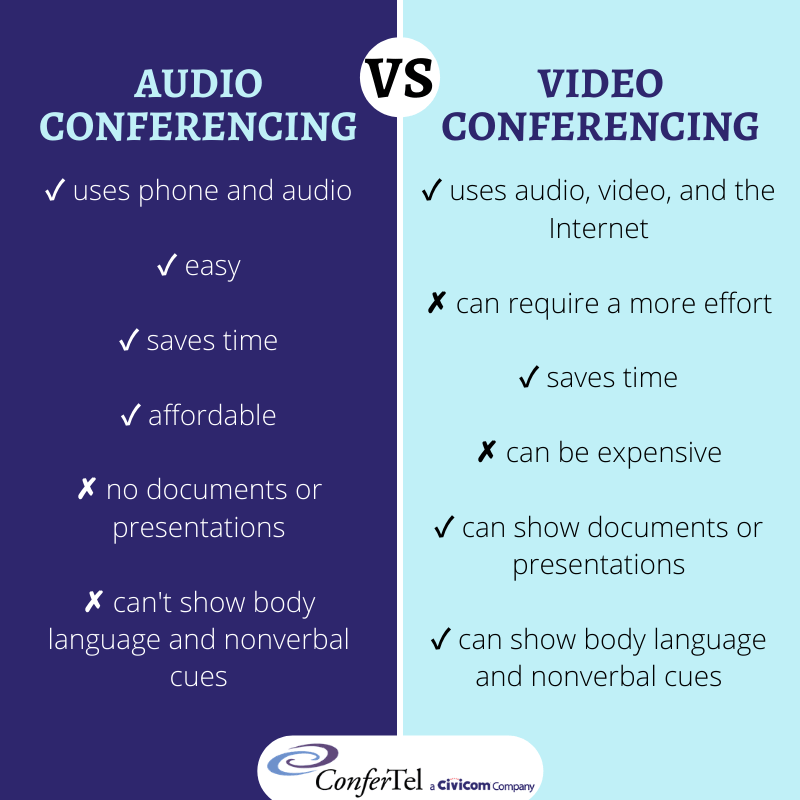Remote meetings have changed the way businesses function over the past few decades. They break geographical barriers, lessen the business expenses, and can even boost productivity. There’s no reason not to try it yourself for your business.
Two of the most popular remote meetings are audio conferencing and video conferencing. While these two seem so alike and can be intermixed, there are variations that can make quite the difference when you’re choosing which is better for you.
Audio Conferencing
Audio conferencing, otherwise known as teleconferencing, is a remote meeting where participants make use of telephones and audio equipment to communicate. People can use telephones, mobile phones, or speakerphones and all they have to do is dial a number and input their unique pins.
Using audio conferencing is easy and manageable. You only need to make sure your phone is working and that you have dialed in the right numbers, then you’re good to go for the meeting. This type of remote meeting is affordable as well. Since participants are only using an audio conference call, they won’t be spending a lot of money for travel or food. Audio conferencing also makes it possible for people to participate in whatever environment they may be. A coffee shop, their home office, the living room, the garden, anywhere.
Video Conferencing
Video conferencing, on the other hand, integrates video onto the teleconference, therefore, transforming it into a new kind of remote meeting. This is what you would call a virtual meeting. People from different locations make use of phones, video equipment, the Internet, plus some other online solutions to interact and meet just like they would in a regular face-to-face meeting.
Video conferencing presents several advantages like no other. With a virtual meeting like this, people can better communicate as they see each other, not just hear. Video conferencing also allows the use of slide or document presentation, photo galleries, and more. This can aid the meeting and provide the participants with more insights. It also happens to be much more engaging than other kinds of remote meetings, with better visuals and connections among participants.
Which is better for you?

Now, let’s see if we can compare and contrast the two to see which is better.
While both are easy, fast, and manageable, video conferencing requires more effort. It makes use of the Internet, which can be a bit confusing especially if you’re not tech-savvy. You might run into a few technological problems you won’t be able to handle unless you have an operator from your conferencing service.
Both kinds of conferencing let you communicate with team members, yes, however audio conferencing can present a barrier. Too noisy environments can hinder participants from hearing properly, and participants will not be able to read body language and nonverbal cues from other parties.
If the budget is high on your list, audio conferencing is a great choice. Since you wouldn’t be using the Internet or any webcams and video equipment, you’ll be able to save money indeed.
However, if your meeting will involve a lot of visuals and data, video conferencing is the best choice. This allows you to share documents, slide presentations, photos, and even your screen, to allow a better meeting session for you and your team.
In conclusion, audio conferencing and video conferencing have their own pros and cons for sure. The only way you’ll know which one is better for you is if you analyze your business, your workspace, your workers, and take into consideration the things mentioned above to know just which of the two is perfectly tailored for you.

